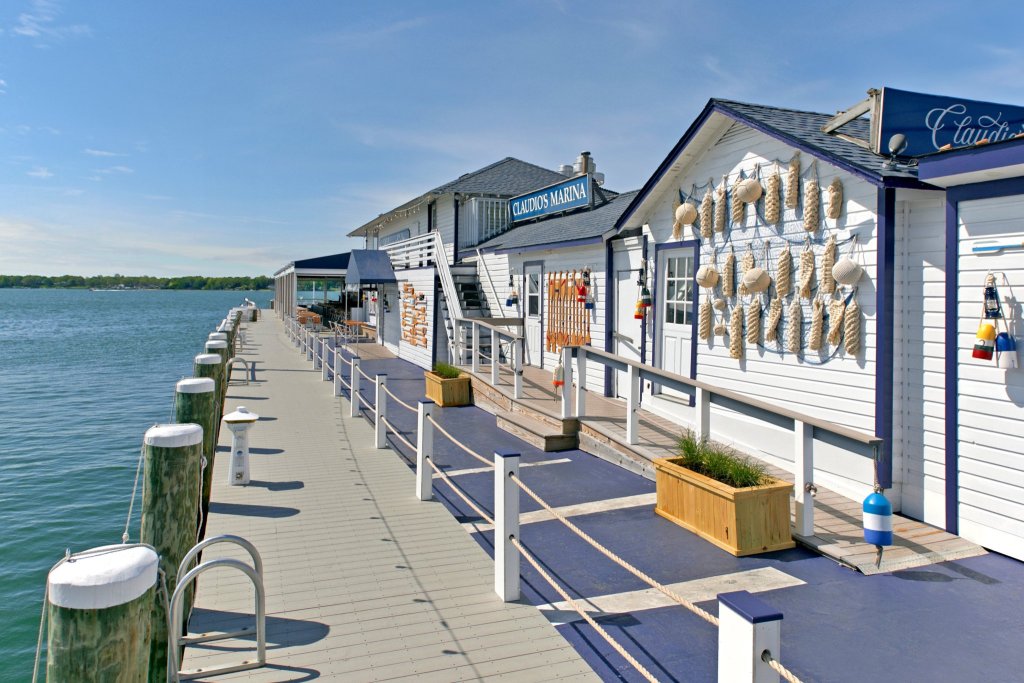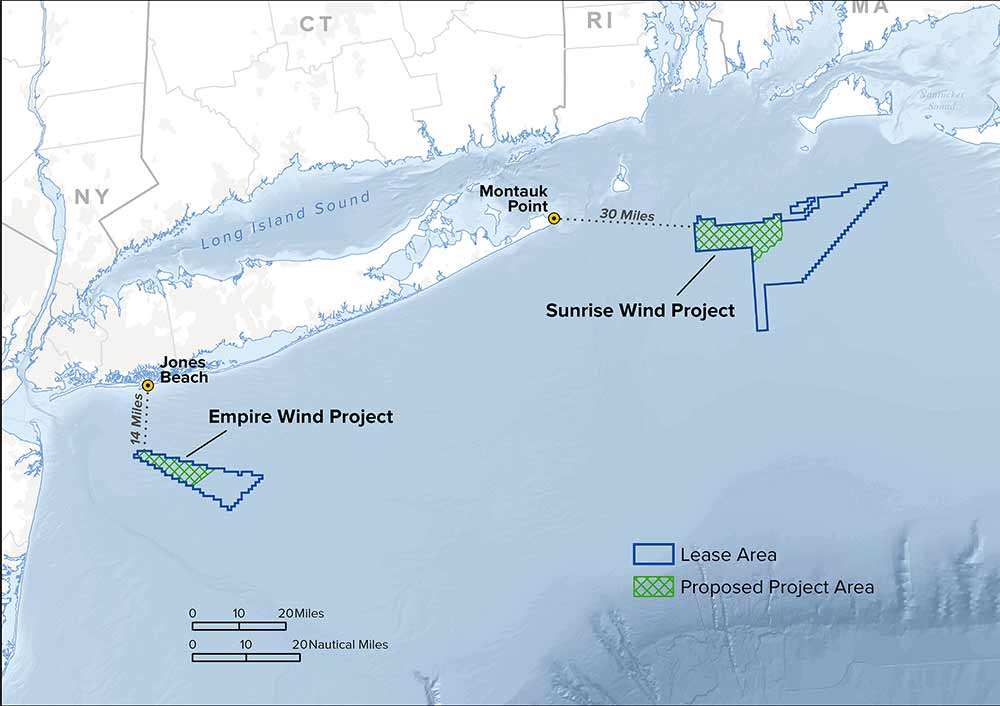Peconic Bay Vineyards: Picking Grapes & Looking to the Future
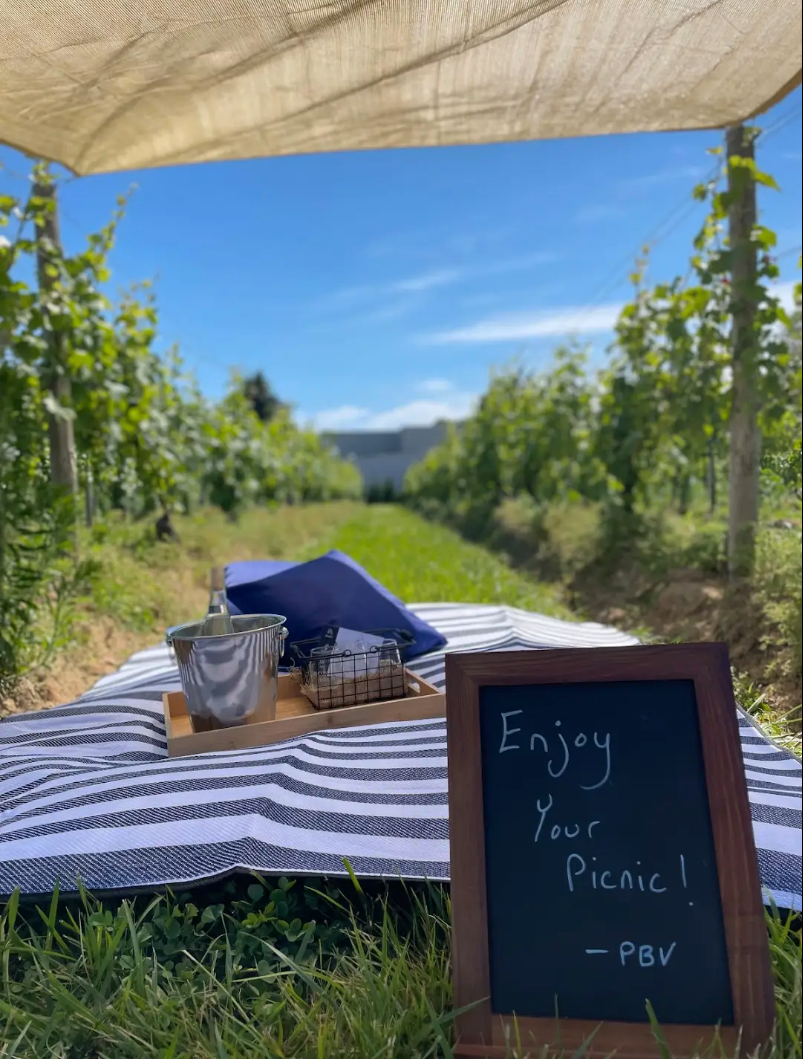
As this year’s harvest moon rose over the East End in early September, local winemakers, like Peconic Bay Vineyards, were immersed in an annual ritual that began on the North Fork almost 50 years ago.
The process of shepherding the grapes of summer from vine to table has gotten a lot more sophisticated since Louisa and Alex Hargrave first planted on a swath of Cutchogue farmland in 1973. But an obsessive focus on climate remains a constant for winegrowers.
With a colder-than-average winter and a prolonged drought, the 2022 harvest was not without its challenges.
The “picking season” generally runs from early September for white grapes to early November for more robust red grapes such as Cabernet Sauvignon. According to Greg Gove, winemaker at Peconic Bay Vineyards in Cutchogue, an unusually hot and dry summer forced him to adjust that timetable on the fly.
“This year, with the heat, everything was accelerated,” says Gove. “We picked earlier.”
Even the birds that flock to eat the grapes as they ripen came three weeks early, forcing the winemaker to rush to put up protective netting.
“The birds have been doing this a lot longer than we have,” notes Gove. “They know when it’s time. They were thirsty from the lack of rain.”
The chilly winter also wreaked a bit of havoc. “There’s a chance that a deep freeze in the winter can affect your crop — and we saw that this year,” he explains. “We actually did have lower crop yields. This year was tough in a lot of ways.”
Challenges aside, Gove remains confident in the harvest. “I think the whites are going to be very good, but I’m really excited about the red wines this year,” he says, drawing a sample of still-fermenting Pinot Noir from the spigot of a massive stainless steel vat. “Red grapes really thrive in the kind of conditions we had.”
After picking, de-stemming, pressing, fermenting, barrel aging and a healthy dose of vinicultural art and science, the white grapes from the 2022 harvest will be bottled as finished varietals in 2023. The 2023 vintages will also mark the North Fork’s official 50-year winemaking anniversary as certified by the Long Island Wine Council. Red varietals from this year’s harvest will appear a year or so later, in 2024.
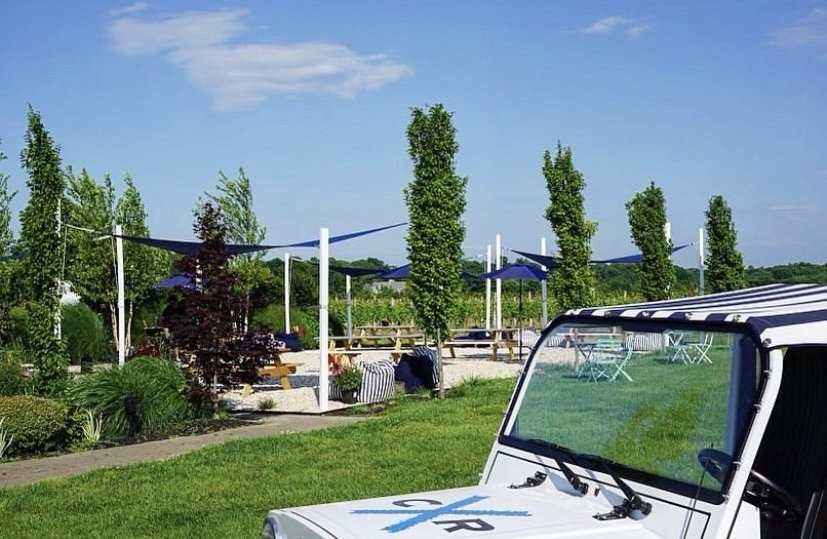
PECONIC BAY VINEYARDS WEATHER GODDESS
Since winemakers spend huge chunks of their professional lives adapting to climate issues, it’s fitting that Stacey Soloviev, director of community relations for Peconic Bay Vineyards, has been dubbed “the Weather Goddess” by her management team, which includes Gove and general manager Ken Cereola.
According to Cereola, Soloviev earned her sobriquet based on her uncanny ability to summon good weather during important outdoor events at the vineyard.
While Soloviev may not be able to tweak the weather during growing season, she hopes to make it rain with her expansion plans for Peconic Bay Vineyards.
The scion of a prominent business family who purchased the vineyard in 2019, Soloviev plans to transform the 53-acre property into a full-service destination resort.
“I was always focused on the bigger vision for this property,” Soloviev says. “We’ve almost finished the design process for a new hotel, a spa, a restaurant and a new winemaking facility and tasting room.”
“My idea is to get people into the vineyards, stay here for the weekend, see the growing grapes and the winemaking process,” she adds. “I want to have guest chefs come out, have a lot of wine pairings and food preparation and really let people see what this region has to offer.”
Currently, the winery is fronted by a comparatively modest and intimate tasting room with a patio and picnic area out back that look out on the vines. Winemaking and storage are housed off the tasting room and parking area. There’s also a standalone covered barn for private wine tastings and special events.
“Ours is one of the smaller tasting rooms. If it rains, we have nowhere to put our reservations,” the Weather Goddess laments.
The winery offers a full tasting experience with and without food pairings. Though it changes from year to year, its current wine roster features nine varietals, all produced on premises and estate grown on the main property or one of three additional farms PBV owns and operates in the region.
The white grape varietals include Long Island mainstays Chardonnay (traditional and barrel-aged) and Sauvignon Blanc, as well as Riesling and Viognier. Red varietals include Merlot, Cabernet Franc and Malbec.
Peconic Bay Vineyards also produces a Blanc de Blancs sparkling wine and “Gillie’s Rosé,” which is named after Soloviev’s 14-year-old daughter, who designed and illustrated the bottle’s label.
The vineyard doesn’t currently have the ability to prepare hot food on premises. However, Peconic Bay Vineyards incorporates meats, cheeses and seafood from local vendors to create imaginative wine/food pairings for its guests.
The vineyard also features an in-house oyster bar through its partnership with the Hampton Oyster Company, which farms its oysters in Peconic Bay. Founded in 2016, the company describes itself as “the region’s first deep-water, surface-grown oyster farm.”
When Soloviev’s team is asked to cite their personal favorite wine/food pairings, Cereola answers quickly: “Viognier and oysters.”
Soloviev doesn’t hesitate, either: “Malbec and chocolate.”
A seasoned winemaker who’s been doing his thing for decades, Gove answers a little more slowly — and a little more specifically: “Unoaked acidic fruit-forward white wines with light acidic food like flounder.”
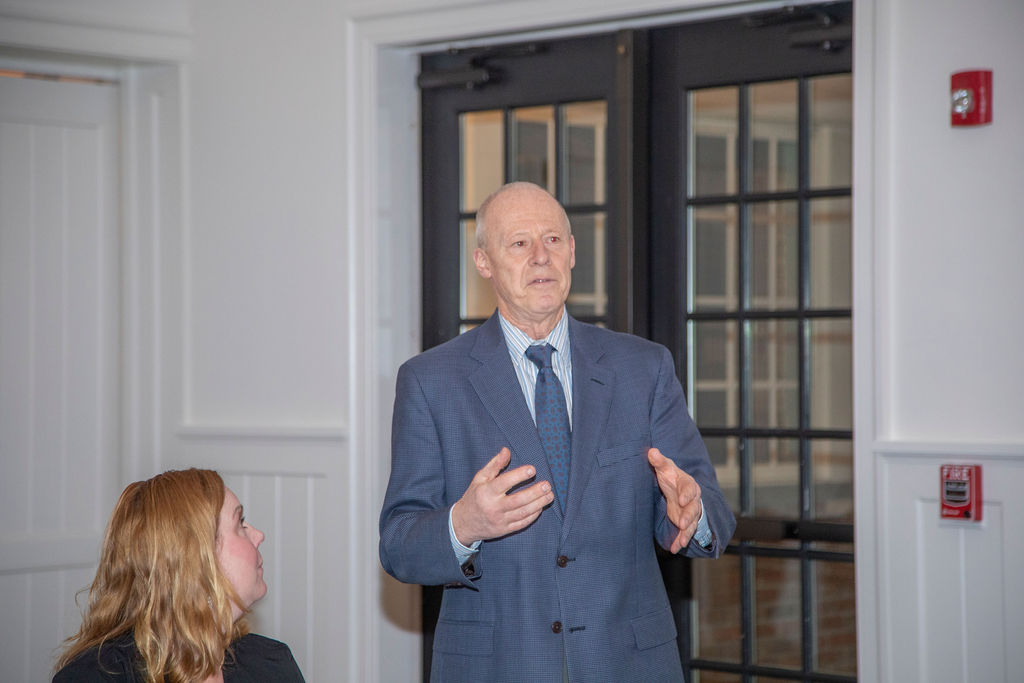
THE TASTES, THEY ARE A CHANGING
As the North Fork evolves and visitors become more discerning about what they choose to eat and drink, Soloviev and her team have noticed a shift in the wine flavor profiles their guests expect.
“In years past, a lot of our customers were ‘sweet seekers,’” says Cereola, who manages the vineyard’s tasting room. “But in the past decade or so, people have learned more about how wine is made and are being presented with quality bottles more consistently. Now they’re really seeking an elevated bottle instead of just a sweet bomb that’s going to satisfy their palate.”
“For the last 10 years, people have been asking for our driest bottle of wine,” he continues. “That’s an amazing thing to hear.”
While its tasting and hospitality facilities are on the smaller side in relation to many of its North Fork neighbors, Peconic Bay Vineyards’ annual winemaking output places it among the more productive vineyards in the region, according to Gove.
With a total of 124 acres spread across four farms, including the vineyard itself, PBV can produce about 26,000 cases of wine per year. That output is set to increase to about 35,000 cases with a new 24-acre planting planned for this year. (Gove estimates that the “average” North Fork winemaker produces around 10,000 cases per year.)
With an expanding population of full-time residents, and more visitors than ever, the North Fork presents a lot of opportunities for development — a fact not lost on Soloviev, particularly given her position as a well-funded vineyard owner with a robust wine-producing capability and ample real estate on which to build.
But Soloviev also understands that local politics aren’t always easy to navigate. As she gestures to a gravel driveway where she hopes to one day see a hotel pool, she pauses and says, “We will be submitting our plans to the town very soon.
“We’ve gotten a lot of great feedback so far,” she continues. “Once we get the approvals, the build itself won’t be difficult. Everything is contingent on that.”
Learn more about Peconic Bay Vineyards at peconicbayvineyards.com.

